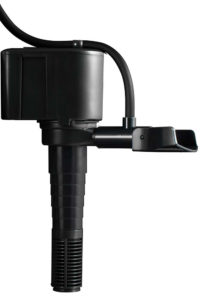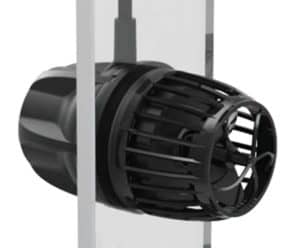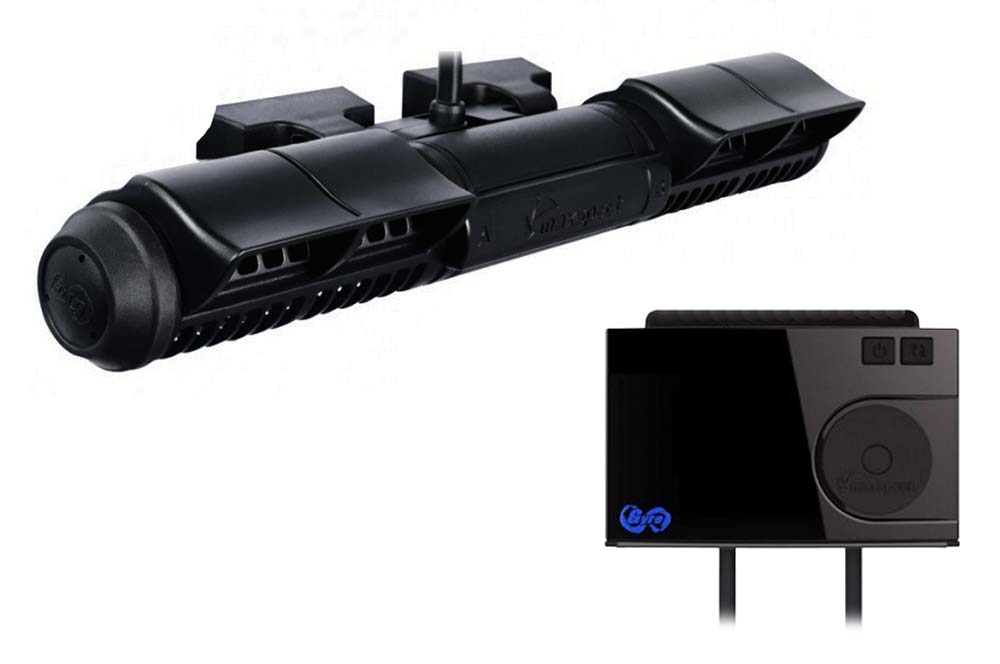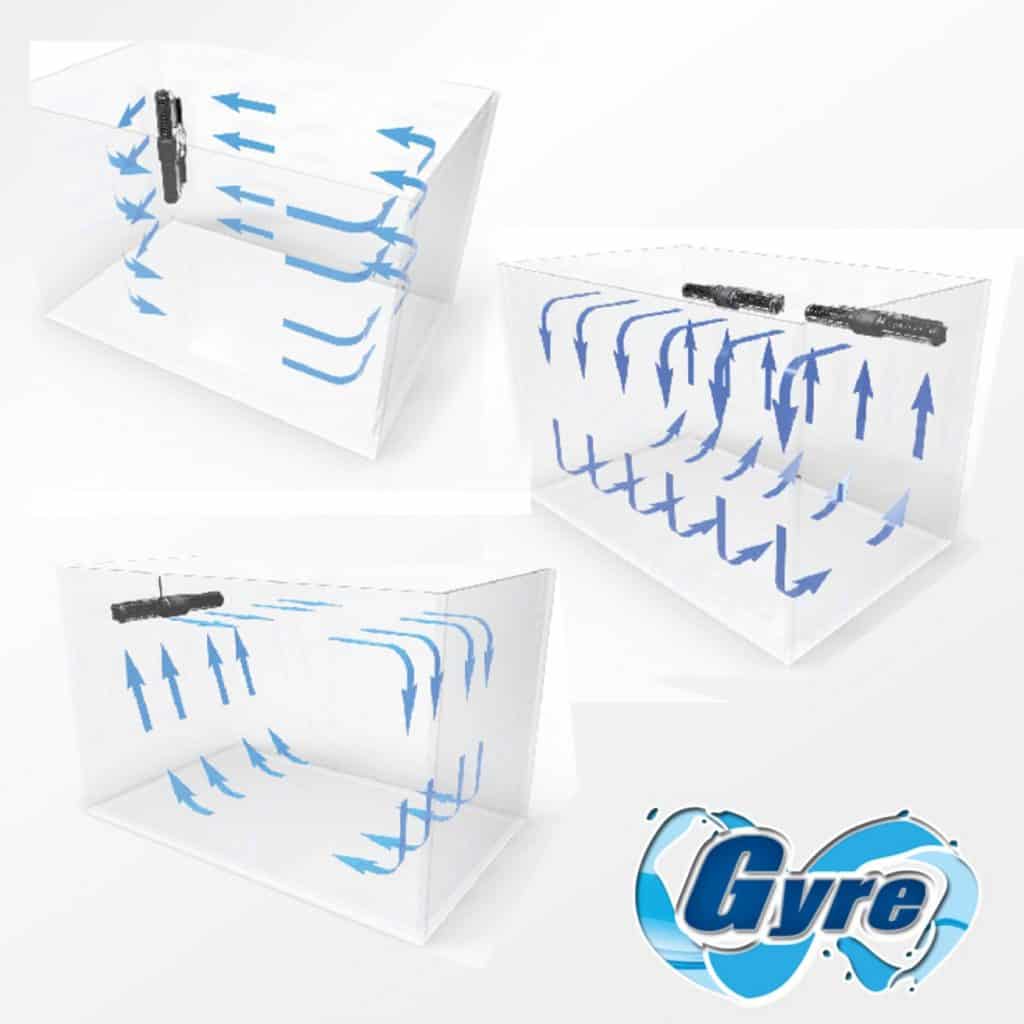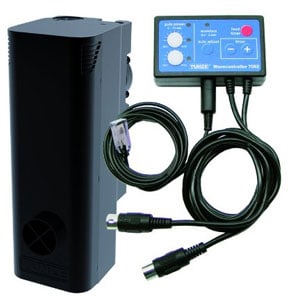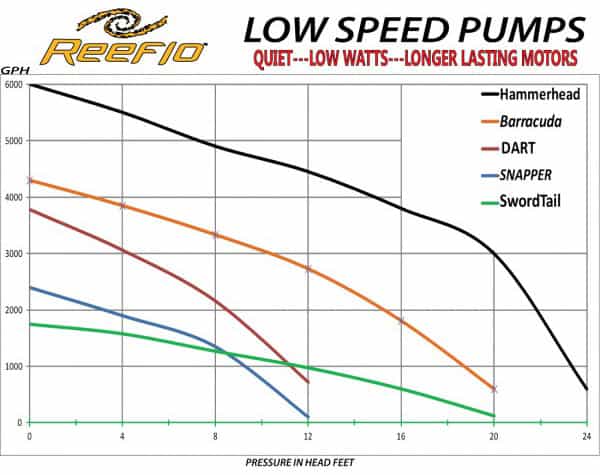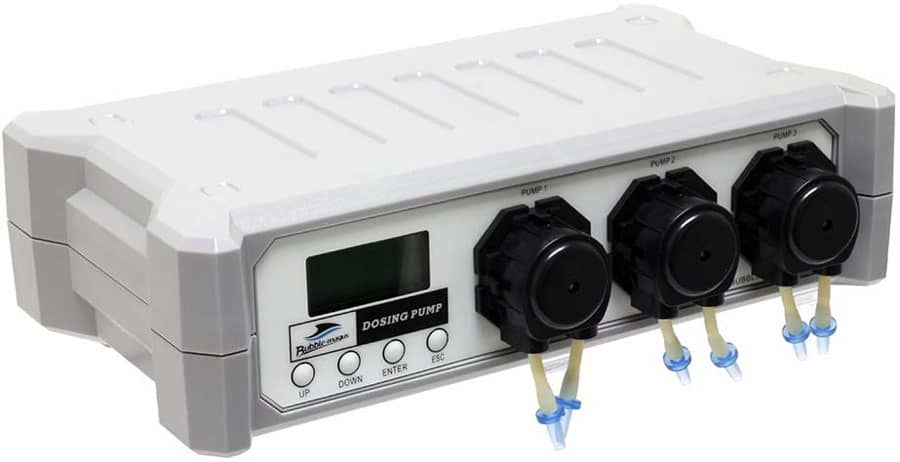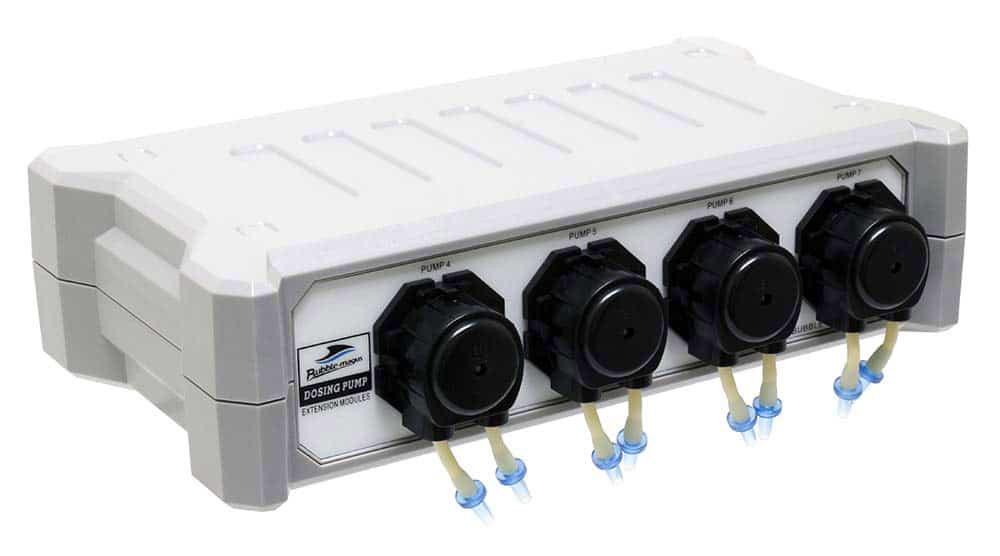There are so many types of pumps you can use in your aquarium but what kind of pump do you need? Each pump type has been designed for a specific purpose and some are even capable of performing multiple roles. This article is going to break down the pump types and where its best to use each one.
The Most Common Types of Aquarium Pump are:
- Submersible Power Heads
- Wave Makers
- Internal Water Pumps
- External Water Pumps
- Dosing Pumps
- Air Pumps
By the end of this article, you will be familiar with all the types of pump, what each one is used for, how to size one, and the best way to mount one so next time you are looking for a new aquarium pump you will know exactly what to get!
What is an Aquarium Powerhead or Pump?
An aquarium powerhead is a fully sealed pump that can be placed underwater. They can be used to suck water through a filter, pump water to an external filter, or be used to move water within the aquarium. They are a very common pump and have multiple ways to be mounted to pipes or the tank.
These are by far the most common type of aquarium pump and most commonly known and used by all aquarists, freshwater especially.
MaxiJets are a common term used to describe these, even though MaxiJet is a brand of powerhead from Marineland, it has seemed to encompass all these styles of pump.
Powerhead pumps of this type usually come as a hybrid that can be used in 4 ways:-
- As a Water Pump to move water to an item of equipment like a media reactor
- As an External Water Pump to move water from one container to another
- As a Fixed Flow powerhead to increase water flow in the aquarium to prevent dead spots
- As a Fixed Flow powerhead with a venturi to suck in air and blow bubbles and water in the aquarium – Freshwater Use Only
Another great benefit of them is that they can be used underwater or plumbed to work outside of the tank.
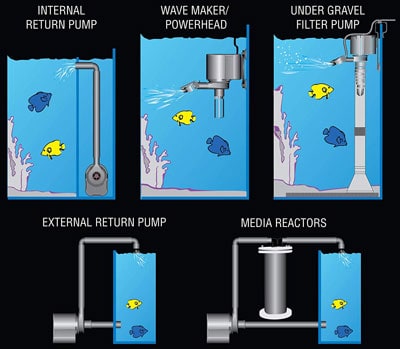
FLOW – You can find this type of pump in a range of flow sizes from tiny 50GPH (Gallons Per Hour)/190LPH (Liters Per Hour) up to around 1200GPH from a slew of manufacturers.
PRICE – They generally range in price depending on the flowrate/size of the pump starting from around $5 from the Chinese manufacturers, up to $35.00 for the Cobalt Brand.
USES – Water Flow in an aquarium, Water supply to equipment, Saltwater mixing, Water transfer.
You can find these pumps Here at Amazon.com
What is an Aquarium Wave Maker?
An aquarium wavemaker is a fan-type pump that is installed underwater which varies its pumping patterns to create random flow within that tank. They have various flow patterns and flow strengths that can be selected via its controller settings. These pumps are common in aquariums containing corals.
Most of these types of pumps will be controlled by some kind of pump controller or aquarium controller to alter the on/off time, the speed/flow of the pump, and also link it to other pumps to work as a team or as individuals.
Within the WaveMaker category are various types of individual pump:
- Fixed-Flow Pumps
- DC Controllable Pumps:
- Controllable Powerheads
- 2 Part Magnetic Pumps
- Gyre Pumps
- Waveboxes
Let’s have a look at each of these in more detail…
What is a Fixed-Flow Aquarium Pump?
A fixed-flow aquarium pump is a fan-type pump that creates high water flow within the aquarium but at a set flow rate. They are the most basic of flow pumps and pump at a set rate while they have power. They are commonly used with a plug-in timer to turn them on and off as required.
Usually referred to as circulation pumps, these pumps are designed to move large amounts of water at a set flow rate. You plug them in, they run, unplug them, they stop.
They are the simplest wavemaker on the market and by purchasing several and pointing them correctly you can create random flow patterns within the aquarium with ease. They are great for hiding behind rockwork to prevent flow dead spots.
Cheaper Option:
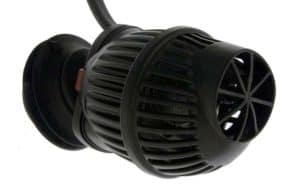
Available at Amazon.com
More Expensive Option:
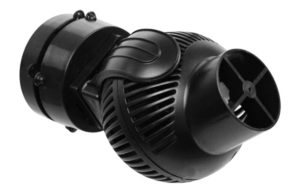
Available at Amazon.com
To create even more random flow required for corals, many aquarists link these ‘Dumb’ pumps to a simple ‘Flip-Flop’ controller like the one below:
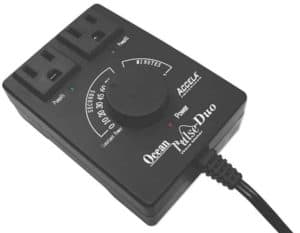
By using the pump controller above and 2 powerheads or circulation pumps you can set up a wave-making system in your aquarium for under $60 with small MaxiJets or Koralias.
An alternative to the controller is using two plug-in timers connected to two pumps. Set each timer to be on for 15 min (One Pushin Segment)then off. By alternating when each timer is one you can create flow that is not constantly in one direction within the aquarium.
You can find simple timers Here at Amazon.com
Specs:
FLOW – You can find this type of pump in a range of flow sizes from tiny 250GPH for nano aquariums up to +3000GPH for large aquariums.
PRICE – They generally range in price depending on the flow rate/size of the pump starting from around $25 for nano-sized pumps up to $170 for the high-flow pumps from Tunze.
USES – Water Circulation, Wave Making, Frag Tanks
BRANDS – Hydor Koralia, JBJ Oceanstream, Tunze Turbelle Stream, Sicce Voyager
You Can Find More Information & a Great Selection of Fixed Flow Pumps Here at Amazon.com
What are Controllable Aquarium Pumps?
Controllable aquarium pumps plug into the house power but the pump head is operated by a low-voltage DC signal from an attached controller. The controller allows the pump to operate in various flow patterns with various flow settings. Many pumps can be linked together or to an aquarium controller.
These pumps form the basis of 95% of the wave-making pump technology. Each pump has a DC electric motor that plugs into a dedicated pump controller or an aquarium controller like the Neptune Apex which then controls the frequency of when the pump is on, the speed at which the pump turns, and also links in with other connected pumps to work them as a team or individually.
Within this family of controllable DC pumps are several pump types:
What is a Controllable Aquarium Powerhead?
Controllable powerheads are all DC-voltage pumps that can be used individually or linked together to form a team of pumps. They are controlled by their manufacturer’s pump controller or if able, they can be linked and controlled to an aquarium controller like the Neptune Systems Apex.
The pump’s controller will automatically adjust the on/off times and flow rates to each pump and can be programmed with different modes to simulate varying current patterns found in the ocean. In addition to these pumps being turned on and off, these can be ramped up or down to create strengthening and weakening flow patterns.
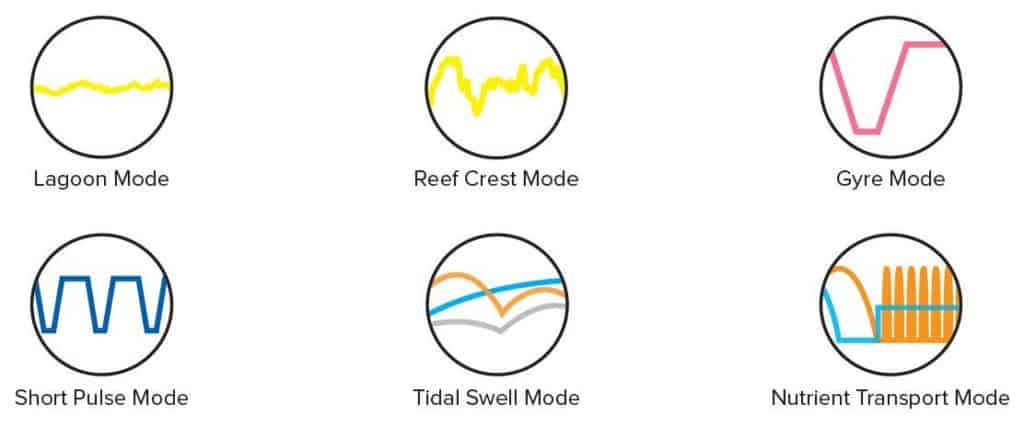
There are many different sizes, styles, and brands of DC controllable pumps to suit every aquarium and budget.
Within the Controllable Pump Category there are a few different styles of pump head that are used for different applications:
2 Sided Magnetic Aquarium Pumps
This category of pumps is exclusively owned by the patent-protected EcoTech VorTech range of wavemakers. The pump is in two halves. The motor sits on the outside of the aquarium and the propeller housing sits inside the aquarium.
This has two advantages:
- No wires are seen inside the aquarium
- Heat created by the motor is not transferred into the water.
These pumps are fully controllable by their EcoTech controller and create excellent, strong, random flow patterns necessary for thriving corals.
The MP range is also controllable by Neptune Apex Aquarium Controllers.
Specs:
FLOW – The VorTech range from EcoTech come in 3 sizes: +1500GPH for MP10, +4500GPH for MP40 & +7500GPH for the MP60.
PRICE – They are expensive pumps but are very good quality. MP10 = $299.99ea, MP40 = $366.50ea, MP60 = $699.99
USES – Water Circulation, Wave Making, Frag Tanks
You Can Find More Information on the Vortech Pumps Here at AquariumSpecialty.com
What is an Aquarium Gyre Pump?
A gyre aquarium pump moves large sheets of water in a laminar flow. The pump uses two horizontally mounted impellors to move wide swaths of water. They are very good a creating large volume water movement, especially in long aquariums. They are also DC controllable with various flow patterns & speeds.
Gyres are a very different style of pump and they work in a very different way to the normal propeller style of pump. The gyre moves water in a laminar flow, meaning it moves sheets of water instead of jets of water.
Gyre’s move tremendous amounts of water and the slim design of the pumps help them disappear into the background of an aquarium. Gyres are perfect for large aquariums with a lot of water volume to turnover or peninsular-style aquariums where owners do not want to see pumps on any of the 3 viewing sides.
2 gyres mounted vertically on either side of the overflow working on opposite cycles is a typical installation solution on peninsular aquariums, or mounting on opposite ends of conventional aquariums.
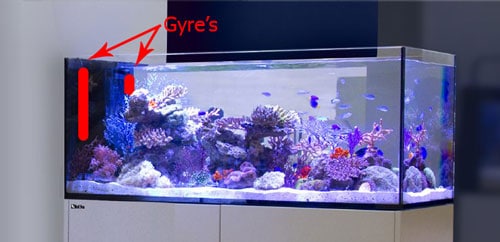
Gyres are all DC pumps that come with their own controller or can be linkable to aquarium controllers like the Neptune Apex.
Specs:
FLOW – You can find this type of pump in a range of flow sizes from 750GPH up to around 5200GPH.
PRICE – They generally range in price depending on if you only require the pump head to attach to your own aquarium controller or a pump and controller kit. From $130.00ea
USES – Water Circulation, Wave Making, Frag Tanks
BRANDS – Maxspect Gyre, Icecap Gyre
You Can Find More Information & a Great Selection of Gyre Pumps Here at Amazon.com
What is an Aquarium Wave Box?
An aquarium wave box is a vertical box that mounts in the corner of the aquarium. Inside the box is a high-flow pump that pulses at set intervals pushing the water from inside the box into the aquarium. When tuned to the size of the aquarium they create a repeatable wave that travels across the entire tank.
A wave box is a superb device for creating a ‘Real’ wave that goes across your aquarium. Tunze Wave Boxes are the hobby standard and are designed to create really good water motion while staying discreetly out of sight.
Water fills the box and the pump ejects the water at a predetermined pulse. Using the controller you are able to select the power of the wave and tune the cycle time to create the perfect wave motion in your aquarium.
The wave boxes stick to the back corners/sides of the aquarium using a magnetic mounting system with rubber anti-vibration pads to keep it running silent. They are best used in larger aquariums where moving large volumes of water are required.
Specs:
FLOW – Wave boxes are sized based on the aquarium rather than flow. Most are sized for 100-370 gallon aquariums.
PRICE – A wave box with pump and included controller are around $300
USES – Water Circulation, Wave Making, Frag Tanks
BRANDS – Tunze
You Can Find More Information About the Wave Boxes Here at Amazon.com
What is a Submersible Aquarium Pump?
Submersible pumps are a pump designed to be constantly submerged underwater to suck in the surrounding water and pump it to the aquarium or a piece of equipment.
Most pumps are used in sump-based aquariums as the return pump to move water back to the aquarium after flowing down to and through the sump.
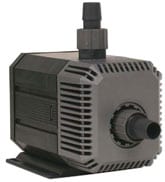
Available at Amazon.com
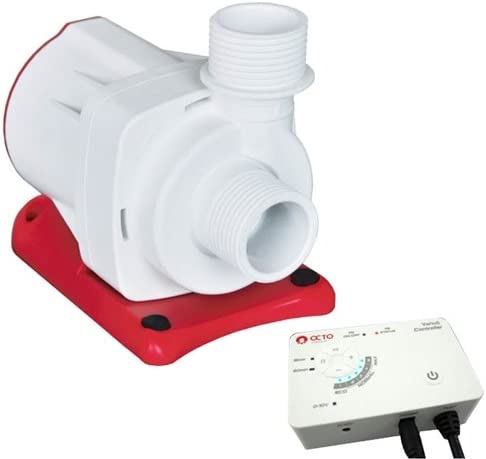
Available at Amazon.com
To ensure these pumps are super useful pumps like the Eheim range above can be used internally or plumbed to run externally if required. This makes them a great choice for many aquarists.
Some submersible pumps are DC controlled so their flow rate can be adjusted to suit the application, but most are just ‘Dumb’ pumps. Plug them in and let them run.
The main characteristic of the submersible pump, also known as an Internal or Return Pump is that they are designed to pump water up high. The height each pump will pump to will be listed in its specification data on the manufacturer’s website along with the flow the pump will deliver at that height. The higher the water has to be pumped, the lower the flow rate will become.
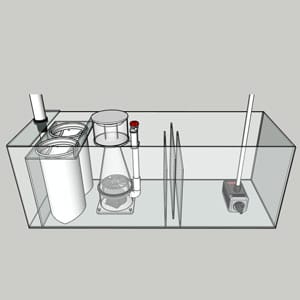
The majority of submersible water pumps are designed for pumping to head heights under 10ft high. Usually, these pumps will sit in a sump in the stand under the aquarium. For pumping to greater heights, for instance from a filter room in the basement, a more powerful external water pump may likely be required.
Specs:
FLOW – From small 50GPH pumps for use in All-In-One Aquariums with no head pressure up to +6000GPH or 45ft head pressure producing Goliaths.
PRICE – Small pumps begin around $10 up to $2600 for the Abyzz A Series pumps
USES – Water Circulation, Water Return, Water Mixing, Water Transfer
BRANDS – Sicce, Reef Octopus, Hydor, Eheim, Ecotech, Red Sea
You Can Find More Information & a Great Selection of Submersible Pumps Here at Amazon.com
What is an External Aquarium Water Pump?
External pumps are pumps that cannot be submerged underwater. They consist of an electric motor mounted to a pump housing that sits outside of the aquarium or sump. They are best used for pumping water at height from a sump located in a room below or a long distance away.
When your filtration is located remotely these are by far the best pump option, however they do coast more. The submersible pumps mention earlier are getting better at their pumping efficiency up to some good head heights and even some of the DC controllable pumps are managing to pump up to 20ft, but they are generally deisng for installation in the aquarium stand.
When pumping above 6-10ft high you will need to look at the external pumps. The pump you chose will all depend on the flow you require at the specific height above the pump.
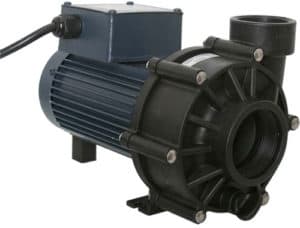
To size an external pump correctly you need to match the flow required through the sump feeding the protein skimmer.
Example: If my return pump is 17ft below the top rim of my aquarium and I need 500 gph at the return nozzle to ensure I have 500 gph flowing down to my sump and protein skimmer, using the chart below I would need to purchase a Reeflo Barracuda or Hammerhead.
The external pumps can be more expensive, but if you have a remote filtration room or you need to run water up high, the external pumps will be the most cost-efficient way. If you do not have room to fit an external pump then you may have to look at some of the internal pumps with high head height capabilities.
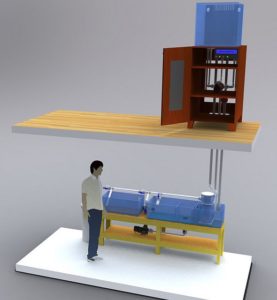
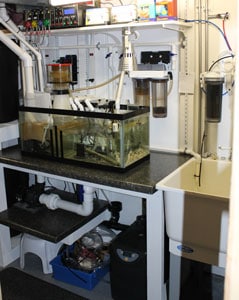
FLOW – From 200GPH at zero head height up to 8500GPH or 55ft Head Height.
PRICE – From $110 up to $600 for a Dolphin Amp Master
USES – Water Circulation, Remote Filtration Rooms, Water Mixing, Water Transfer
You Can Find More Information & a Great Selection of Submersible Pumps Here at Amazon.com
What is an Aquarium Return Pump?
A return pump is used in aquariums with a sump located below or next to the aquarium. Water flows from the aquarium to the sump via a weir and gravity and a return pump is used to pump the water back to the aquarium after passing through the filtration within the sump. Return pumps run constantly.
Return pumps are also used in All-In-One aquariums where the filtration compartment is built into the rear of the aquarium.
If you would like more information on All-In-One (AIO) aquariums see my guide here:
What Is An All In One (AIO) Aquarium? Great For Your First Tank!
Anytime the aquarium water flows out of the main display area and into another area the water has to be pumped back. This is the job of the return pump.
Aquarium & Sump Setup
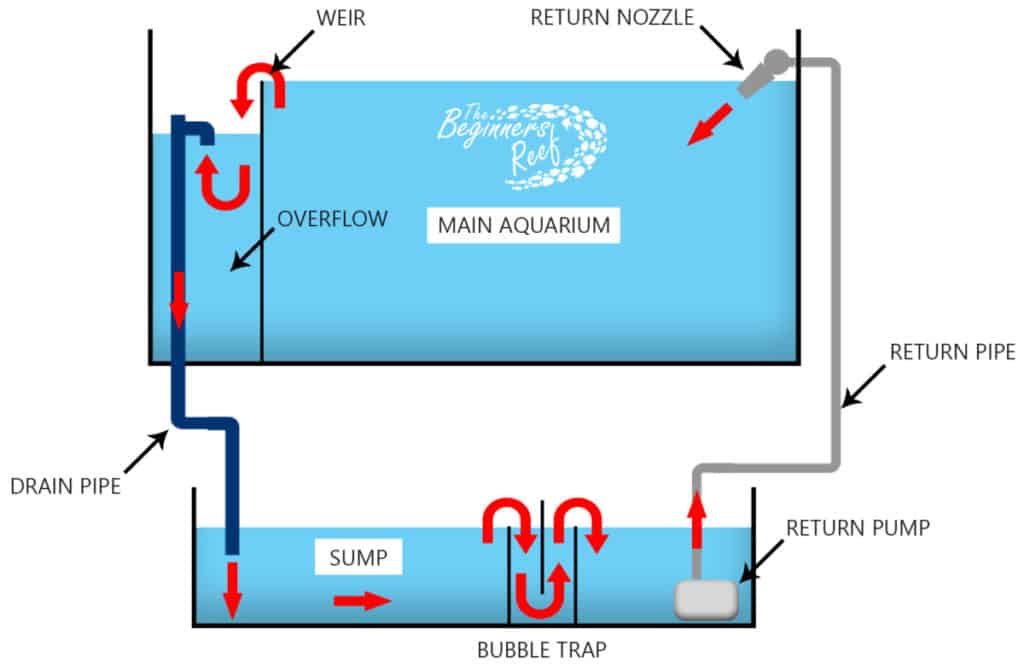
All-In-One Setup
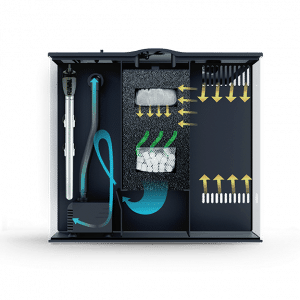
The return pump consists of either a submersible or an external pump depending on the setup and installation of the aquarium. The ‘Return Pump’ is the generic name given to the pump and is what you will hear most commonly within the hobby. It is just the pump that ‘Returns’ the water back into the main aquarium.
Aquarium kits can come with an included return pump or it can be left to the purchaser to size and select the correct return pump for their installation.
If you would like a detailed guide on how to size and select a return pump please see my article here:
Aquarium Return Pumps: A Step-By-Step Selection Guide
What is an Aquarium Dosing Pump?
Dosing pumps are used to add liquid supplements to an aquarium in very small, measured quantities. The dosing rates can be anywhere from 1ml/minute up to hundreds of ml’s per minute & dosed multiple times per hour/day. Each dosing pump is controlled by a built-in programmable electronic controller.
Dosing pumps are mainly used when the coral in the aquarium is consuming more calcium, alkalinity, and magnesium than can be replenished during water changes. To ensure coral remains healthy these 3 elements must be added to the aquarium to match their rate of consumption. Most aquarists will begin this task manually dosing, but will soon invest in a dosing pump system to fully automate the daily task.
Dosing pumps can come as a single-head pump that runs when it’s plugged in or multiple-head systems with a built-in electronic control system.
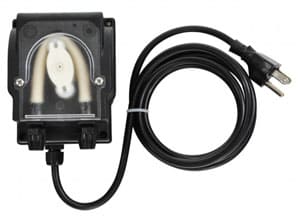
Available at Amazon.com
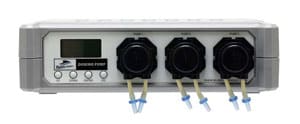
Available at Amazon.com
Most single-head dosing pumps can be controlled in 3 ways:
- A ‘Dumb’ pump that just turns when power is applied. The way to control them is by using a plug-in digital timer that can be controlled to the minute. If the pump moves 2ml/minute and you need to dose 40ml, the pump will have to be on for 20 minutes.
- If the pump is part of a manufacturer’s aquarium control series, the pump will need to be plugged into the aquarium controller and controlled by it. Setting up the dosing functions will be part of the software/interface.
- The pump will have an integrated controller that will have an app/screen to allow you to set up the dosing functions.
Newer single-head and all multi-head dosing pump units will come with an integrated controller within the unit. This controller will look after each pump head and allow you to easily set up dosing amounts, multiple doses per day, pump calibration, and possibly even an app-based user interface.
Some manufacturers also make multi-head dosing units with no controller built-in, these ‘Slave’ units can be added to a controlled dosing unit to increase the number of pumps to be controlled. This allows more fluids/supplements to be dosed.
FLOW – Each manufacturer has different pumping rates, and some can even have variable rates. Ranges start from 1.1ml/minute up to 120ml/min
PRICE – A Single head pump can start from around $50 up to $850 for a multi-head unit and controller
USES – Water Changes, Automatic Top-Off, Feeding, Supplemental Dosing
BRANDS – Bubble Magnus, Kamoer, Aqua Medic, Neptune Systems, GHL
You Can Find More Information & a Great Selection of Dosing Pumps Here at Amazon.com
If you would like a more detailed explanation of Dosing Pumps please see my article here:
Aquarium Dosing Pumps? What Are They For?
What is an Aquarium Air Pump?
If you are coming from the freshwater world you will know all about Air Pumps. If you are completely new to aquariums an air pump is exactly what it sounds like. It is a pump that delivers air into the water.
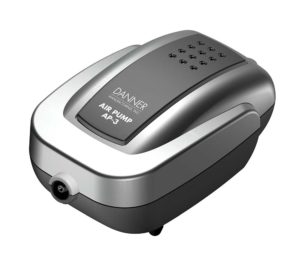
Available at Amazon.com
Oxygen in an aquarium is essential for organic life and when the oxygen begins to reduce, you will start to see fatalities. Air pumps in a freshwater aquarium are mainly used to provide decorative bubbles, or make the Pirates Treasure Chest open on a cycle.
In a reef aquarium, air bubbles cannot be tolerated by the livestock. Tiny microbubbles can be ingested by fish and corals and create problems that can lead to death.
For saltwater aquariums air pumps are mainly used during power outages to help maintain oxygen levels and when transporting fish long distances when moving house for instance.
Some air pumps are battery-powered which makes them ideal for car journeys, and a couple even have power monitoring ability so they automatically start up when the power goes out.
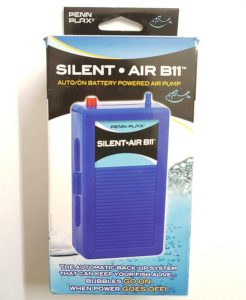
Available at Amazon.com
Specs:
FLOW – The smaller air pumps will deliver 50l/hr for use in transport buckets, with bigger units having multiple outlets and up to tens of liters per minute.
PRICE – The small units can be had from $5.00 up to $100 for large, multi-outlet high-pressure pumps
USES – Power OUtages, Fish Transportation, Oxygen Enrichment, Quarantine Tanks
BRANDS – Aqueon, Danner, Marina, Coralife, Eheim, ViaAqua
You Can Find More Information & a Great Selection of Air Pumps Here at Amazon.com
If you would like more information on how to protect your aquarium during a power outage or how to safely move house with an aquarium using these pumps please check out these articles:
- Aquarium Power Outages – Simple Tips To Save Your Tank
- Moving an Aquarium – Experienced Tank Movers Tips!
To Finish
There are many different types of pumps for use in both freshwater and saltwater aquarium systems. Each has a designed purpose and selecting the one that will suit your aquarium, budget, and control requirements is an easy process with the vast selection in each type.

